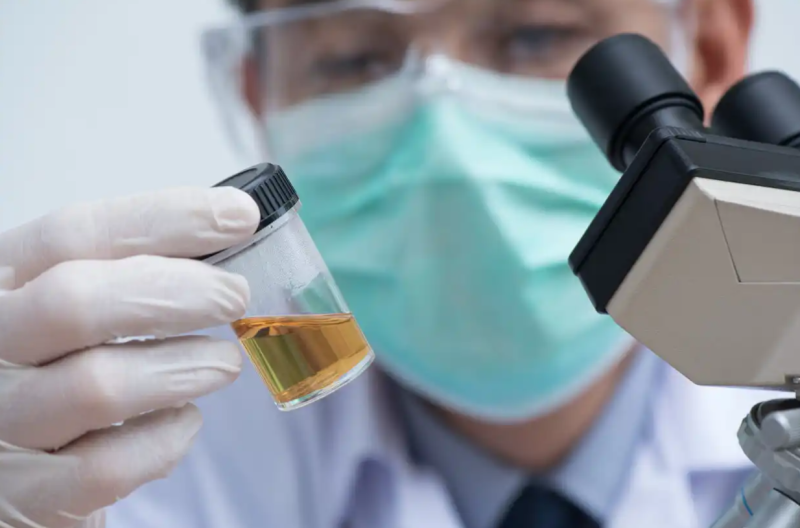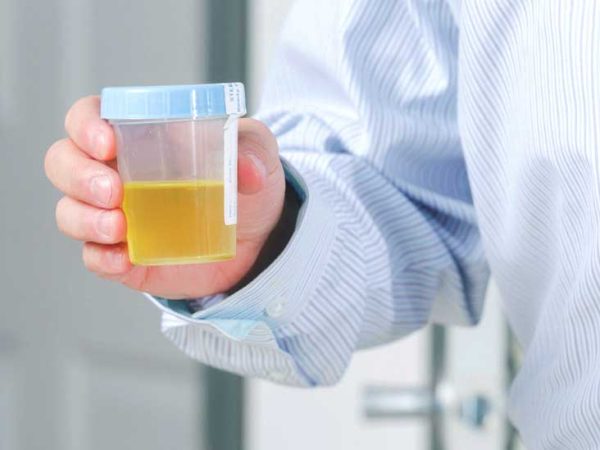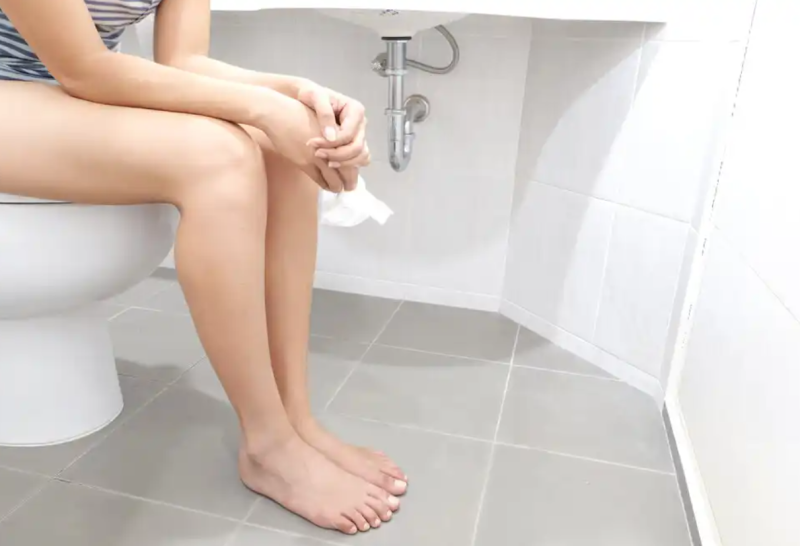
The color and types of urine have been one of the most used ways to know the state of a person’s health since ancient times. Thanks to them, possible conditions can be studied, not only renal or urinary.
Through urine, we expel hundreds of wastes that the body does not need from everything we eat and drink. Therefore, food and hydration are directly associated with the color it has. The aspects considered are color, density, odor, and the presence or absence of foam to define the different types of urine. Of course, this would be superficial since a laboratory analysis is more exhaustive.
Contents
The colors and types of urine
In general terms, it is essential to know what the different types of urine mean about health. In this way, we will be able to detect the signals that the body sends us in case of discomfort, and thus, we will be able to inform the doctor about the observed irregularity.
1. Translucent or very clear
When the urine has no color or is very clear, it indicates that you are drinking much more water than you need and must stop not decomposing the body’s salts. While it is true that the risks of drinking excess water are rare, no one is exempt from suffering from them.
If the color is too light and the person needs to urinate frequently, it may be due to water intoxication or overhydration. On the other hand, if the hue is golden, you feel the urge to urinate, but you haven’t ingested much fluid, then it could indicate diabetes.
2. Clara, the perfect pee
Clear urine that does not reach a yellow hue indicates the body is well hydrated. This color is generally taken as a sign of good health and is one of the ideal types of urine.
2. Light yellow
The light yellow color is also a sign of good hydration. However, if the hue begins to darken, turning deep yellow, amber or brown, this is an indication that you need to drink water.
This characteristic color is due to a pigment called urobilin, which comes from hemoglobin metabolism. Normal urine carries this urobilin, which is diluted in water and creates an almost transparent yellow color indicating proper hydration.
3. Brown or coffee
One of the pathological types of urine is brown. It may be the product of ingested foods such as beans, broad beans, rhubarb, or certain medications. This color can indicate a liver problem or severe dehydration in the most extreme case.

4. Pink, red, and the like
Some red foods can cause changes in the color of the urine and make it have a pink or reddish hue. Eating blueberries, rhubarb, beets, or some reddish food can cause urine to change to this hue.
However, this color can also be due to certain medications, or it can be blood. Generally, it should not be taken as an alarming sign since it can mean hematuria (blood in urine) due to an infection, kidney stones, trauma, or some malignant pathology in the urinary tract.
On the other hand, recent studies establish that urine can turn purple in some bacterial infections. This condition appears in patients who use catheters or tubes. The purple coloration is due to the combination of red and blue pigments from bacteria.
5. Orange
Consuming foods such as cloudberries (orange berries), beets, carrots, or any orange food can cause another type of urine and cause it to turn this color momentarily.
Sometimes, it can indicate a problem with the liver or bile ducts, especially if accompanied by light-colored stools. Dehydration, which can cause urine to become concentrated and more intense in color, can also cause urine to appear orange.
6. Light greenish blue
Sometimes, green urine occurs during urinary tract infections caused by the Pseudomonas aeruginosa bacterium, one of the most alarming types of urine. Outside of this, it can also be due to the consumption of some food, especially if it has a blue or green dye. For example, asparagus can cause urine to change color.
On the other hand, a blue or greenish hue could also indicate that you are in the process of changing vitamins or medications. Among the medicines capable of giving this hue to the urine, propofol, metoclopramide, and traditional Chinese medicine stand out. If neither of these two cases explains the blue-green hue, see your doctor.

Other aspects to take into account
Although color is one of the main characteristics of urine that guides the state of health of the organism, other aspects must be taken into account. In this sense, foam, a cloudy appearance, or an unpleasant odor may indicate some pathology.
7. Foam
If the urine is too foamy, it may indicate excess protein in the body or some kidney disease that must be treated soon. The presence of a thin layer of foam that disappears after a few seconds is considered normal.
However, the presence of multiple layers of foam in the urine that lasts over time is considered a pathological sign, according to this publication in the Clinical Journal of the American Society of Nephrology. Foamy urine can be a clear sign of proteinuria, a hallmark of kidney conditions such as nephrotic syndrome.
8. Cloudy appearance
A cloudy appearance may indicate that the urine contains a high phosphate level, which could result from kidney stones. If the urine remains cloudy for a few days, it is a clear sign of a urinary tract infection, so it is recommended to see a doctor as soon as possible.
An unpleasant odor accompanies the cloudy appearance and makes you want to urinate frequently. In the case of men, muddy or dirty urine color may be due to semen remaining in the urinary tract.
9. Foul odor
When the urine has an intense and unpleasant odor, it can be the product of both what has been consumed (asparagus, coffee, medicines, etc.) and infections. Therefore, if the smell is very intense, seeing a doctor for an evaluation is recommended.
How to detect urine problems?
In addition to considering the types of urine described, it is necessary to identify different symptoms to detect any alteration in the body. Among the signs that should be taken as an alarm signal, the following stand out:
- Difficulty initiating urination.
- Pain or interruptions when urinating.
- Dribbling is prolonged at the end of urination.
- Persistent feeling of incomplete emptying of the bladder.
- Involuntary leakage of urine.
- Going a long time without urinating.
- Urinating more often than usual.
Fortunately, most urine changes go away on their own within 24 hours. However, if the abnormalities persist and are accompanied by some symptoms described, medical attention should be sought as soon as possible.
If the color of your urine worries you, tell your doctor
The color and other aspects that define the types of urine can be instrumental when determining your state of health. Above all, in terms of diet and hydration. For this reason, it is essential not to ignore the signs, check yourself periodically, and maintain good lifestyle habits.